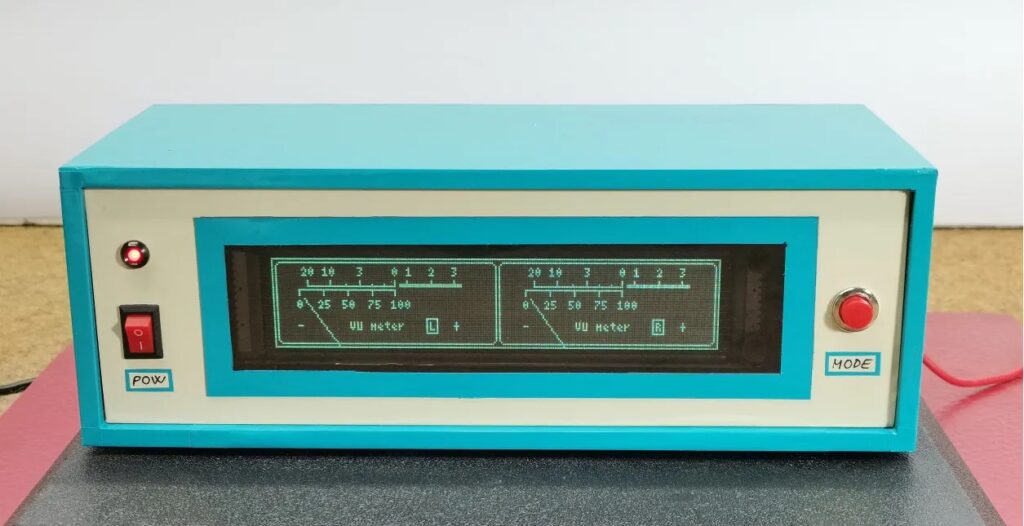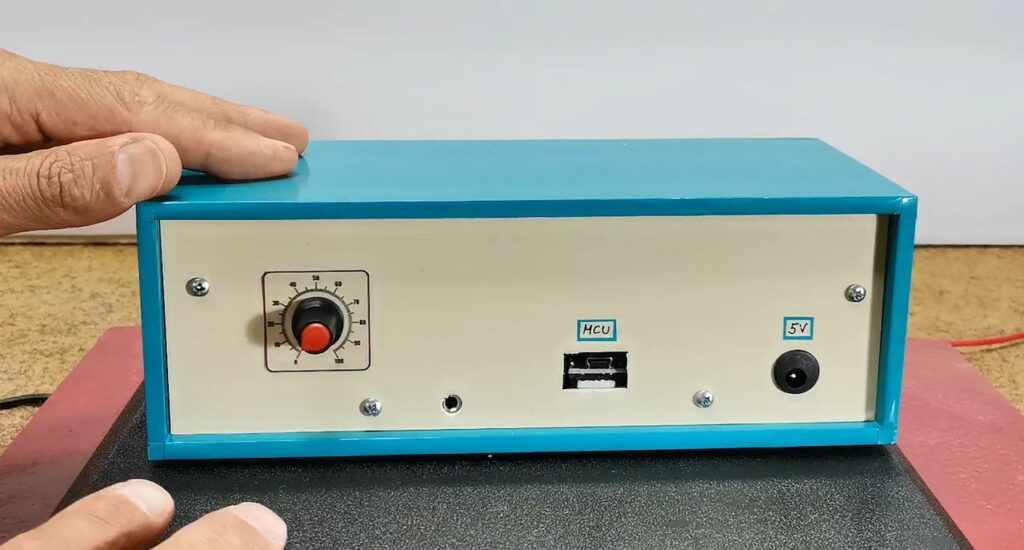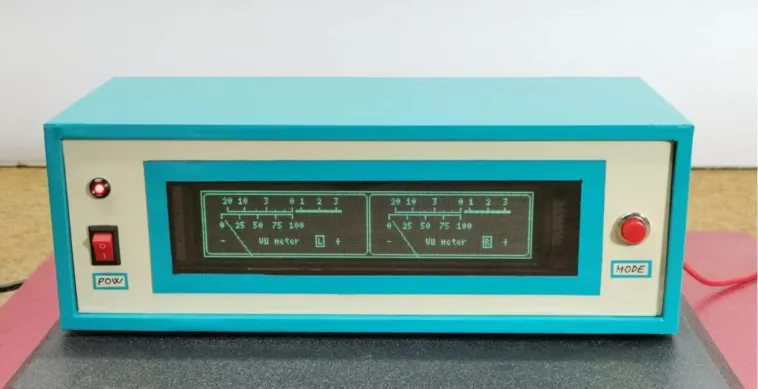
A volume unit (VU) meter is a simple gauge that indicates the amplitude of an audio signal, so higher decibels move the needle further. They’re common in the field of audio engineering and music production, with traditional VU meters being analog. But tuning an analog gauge is a challenge, so Mirko Pavleski designed a VU meter that looks analog and comes with all the benefits of a digital device.
Monitoring the amplitude of a signal (like an audio signal) with a microcontroller is very easy — if that microcontroller has an ADC (analog-to-digital converter). MCU processors only understand digital ones and zeros, so the ADC is necessary to translate an infinitely granular analog signal into digital values that approximate it. The Arduino Nano board has eight analog input pins monitored by the ATmega328’s ADC and this project uses two of them: one for the left audio channel and one for the right.

The only other major component for this project is an GP1287 VFD (vacuum fluorescent display), which Pavleski chose for its high contrast and fast response time. It has a resolution of 256×50 and that is wide enough to show two virtual gauges side-by-side. The Nano simply performs an analog read for each audio channel, then updates the graphical gauge using the U8g2 library for monochrome displays. This VFD draws quite a lot of power and that necessitates the use of dedicated power supply. The only other components necessary are resistors, capacitors, and a rotary potentiometer.


